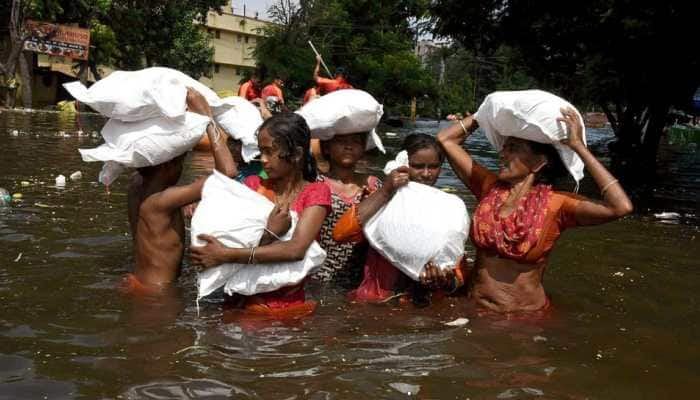Why is widespread rain in Jharkhand a boon?
The heavy rain pouring in Jharkhand has helped reduce the overall rainfall deficit of the state.
- India Meteorological Department says that Jharkhand's rain deficit this season has decreased to 25 per cent
- The state has received 676.2 mm rainfall from June 1 to September 12
- Bokaro, East Singhbhum, Khunti, Ramgarh, Ranchi, Saraikela-Kharaswan, and West Singhbhum are the seven districts where rainfall has now achieved the standard category level
Trending Photos
) Image Credit: File Photo; Representational purpose only
Image Credit: File Photo; Representational purpose only New Delhi: The heavy rain pouring in Jharkhand has helped reduce the overall rainfall deficit of the state. As per Abhishek Anand, Ranchi meteorological centre in charge, “Jharkhand's overall rainfall deficit reduced from 27 per cent on Sunday to 25 per cent on Monday. The state has received 676.2 mm rainfall from June 1 to September 12 against the normal rainfall of 899.6 mm rainfall during the period”
The India Meteorological Department says that Jharkhand's rain deficit this season has decreased to 25% as a result of the intense depression that has been sweeping over Chhattisgarh and Madhya Pradesh for the past 24 hours.
There are no reports of flooding in any part of the state. “The deep depression over south Chhattisgarh and adjoining southeast Madhya Pradesh has moved nearly northwestwards and weakened into a well-marked low-pressure area. So, Jharkhand is expected to get some relief from incessant rain after Tuesday afternoon," Ranchi meteorological centre in-charge
"However, rainfall will continue for at least next 48 hours due to formation of a trough line,” he said. Bokaro, East Singhbhum, Khunti, Ramgarh, Ranchi, Saraikela-Kharaswan, and West Singhbhum are the seven districts in the state where rainfall has now achieved the standard category level for monsoon.
Seventeen other districts, however, still have rain shortfalls ranging from 24% to 66%. Pakur is facing the maximum rain shortfall at 66%, followed by Sahibganj at 62% and Godda at 55% rain shortfall, the IMD official said.
Farmers in Jharkhand are experiencing drought-like conditions as a result of the sparse rainfall in the first two monsoon months. The state experienced a 49% overall rainfall deficit from June 1 to July 31. The rainfall is likely to weaken after Tuesday afternoon but sporadic precipitation might continue till September 14 due to the impact of a trough line, a senior IMD official said.
Chief Minister Hemant Soren on Monday held a review meeting given the drought-like situation in the state. “We discussed several issues, including declaring early season drought or later drought. We also discussed the action plan to tackle drought, as it is being witnessed every three or four years in Jharkhand,” state Agriculture Minister Badal Patralekh said.
Patralekh said that Jharkhand faced droughts in 2014-15 and 2018-19. The same situation is being seen in 2022-23. According to Jharkhand Disaster Management Minister Banna Gupta, the meeting decided to drill 100,000 wells and 100,000 ponds in Jharkhand to combat droughts. Additionally, it was planned to introduce programmes between Rs 2,000 crore to Rs 2,500 crore to create jobs in communities.
Stay informed on all the latest news, real-time breaking news updates, and follow all the important headlines in india news and world News on Zee News.
Live Tv







)
)
)
)
)
)
)
)
)
)
